Many gestural shortcuts exist to select rapidly a set of frequent commands on touch-sensitive mobile devices. The most commonly used are pointing gestures, however, research showed promising alternatives building on directional gestures. This type of gestures is mostly used in pie menus. For these shortcuts to be efficient, they must be easy to memorize on the long term. To know which shortcut is the most efficient memorization-wise, we ran a study on two days. Our results did not yield evidence of a difference in terms of recall rate, but highlighted different learning behaviors: users take more time learning the directional gestures.
2018
MemorizationEmpirical Study
Selecting commands with pointing and directional gestures
To compare both gestural input, we developed two interaction techniques for touch-sensitive mobile devices building on the research literature.
The first, leveraging pointing gestures, builds on a grid layout where each grid cell is a menu, and commands are positioned in one part of the grid. To select a command, users must touch the grid cell and touch the command they want to select.
The second, leveraging direction gestures, builds on a circular layout where each sector is a menu or a command. In contrast with the previous technique, it displays an explicit hierarchy. By swiping in the right direction, users can select menus and items easily.
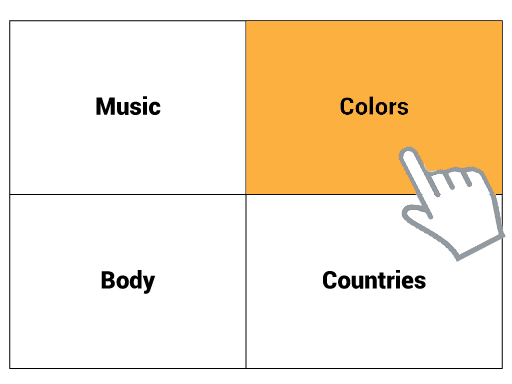
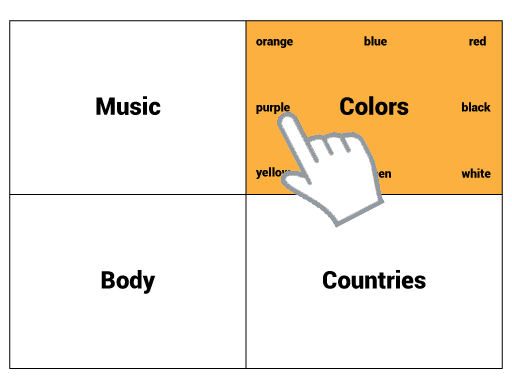
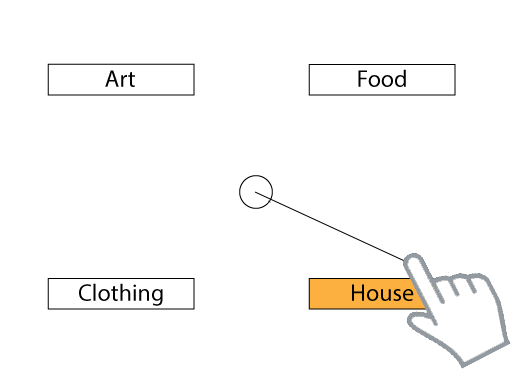
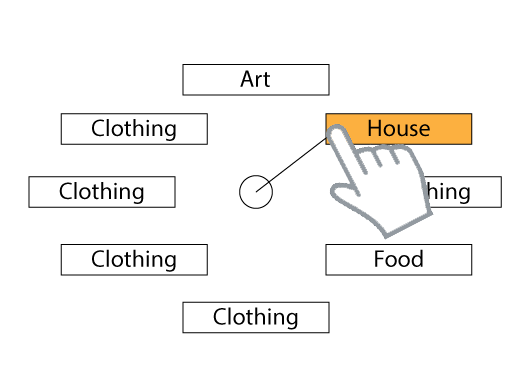
Experimental design: learning and recalling
To observe how users memorize learn and memorize these gestures, we designed an experiment. This experiment consists of three sessions spanned on three days over one to two weeks.
For each session, the participants must perform learning and recall phases. During the learning phases they can see the commands while they cannot during the recall phases.

What did we learn?
Our analysis of the experiment results yielded no significant differences between the gesture types. Throughout all sessions, both gesture types produced comparable results. These results suggest the choice of the gestural shortcut does not have much impact on the user's efficiency.
Looking in more details at the way users learned these gestures, we observed they spent more time looking at the command layouts during the learning phases. We also identified a set of learning strategies (e.g., grouping commands in chunks, memorizing visual patterns) that users shared between the gesture types. This last observation suggests the participants created strategies independent of the shortcuts used.
More details can be found in the paper.
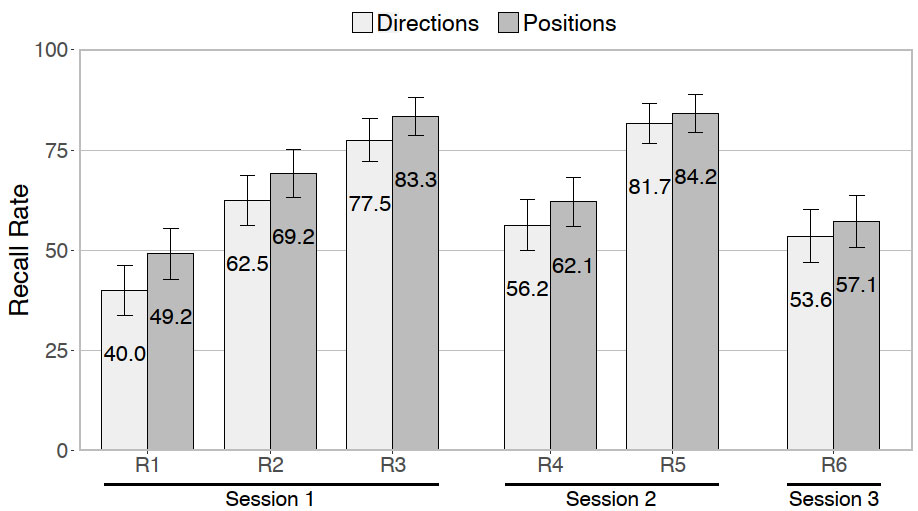
How Memorizing Positions or Directions Affects Gesture Learning? Bruno Fruchard, Eric Lecolinet, Olivier Chapuis ISS'18: Proceedings of the 2018 International Conference on Interactive Surfaces and Spaces, pp.107-114